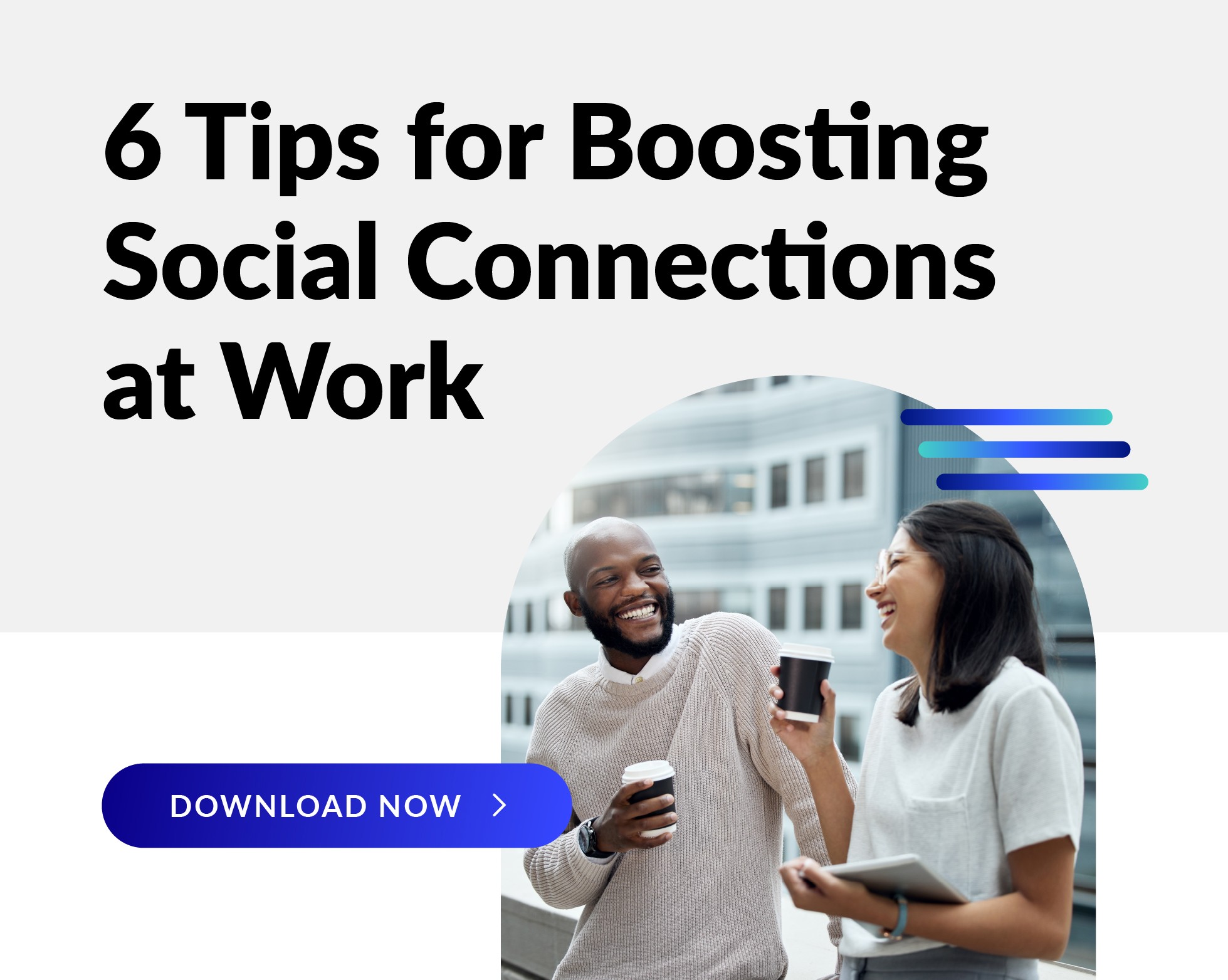
It’s that time of year when we compile our annual list of 2021 trends to watch for in the well-being industry. One thing is for sure—the pandemic has reinforced just how important well-being is for employers, health plans, and the populations they serve. In this two-part blog, I’ll share my thoughts on how well-being programs will continue to evolve during this unprecedented time in our lives.
Did I think we’d still be in the midst of a pandemic as I sat down to write this annual blog? Certainly not. Yet, here we are. But if we can be grateful for one thing, it’s the greater acceptance that caring for populations must go beyond simply providing health benefits. We have been saying for a while now that we need to provide support for all five dimensions of well-being—physical, mental, social, clinical, and financial. The pandemic has underscored this ten-fold.
First, my macro trend prediction.
Over the past nine months, the lines between work and home have become increasingly blurred—often quite literally, as parents juggled work and school Zoom meetings and worried about the health of older loved ones in our lives. Sadly, this meant way too many women decided—or were forced—to exit the workforce. Many struggled with mental health and how to stay balanced and focused when suddenly the home became the workplace; or, for essential workers, when work became a potentially dangerous place to be.
With everything laid bare, organizations began to understand, in real-time, that you can’t truly separate the person from the job—instead, you must put policies and benefits in place to support the whole worker. And so, we are starting to see well-being viewed as much more than a “program” or “lifestyle benefit,” and more a part of the very fiber of running a company with engaged employees.
So that is my macro trend for the year—that well-being programs will continue to evolve and grow not only to meet this moment, but also in the future as we (hopefully) apply the lessons we’ve learned from this year.
But, without further ado, here are our top predictions for 2021. Some appeared on last year’s list, but bear repeating as they are now more important than ever. And, we are feeling so passionate about these trends that we’re splitting them into two parts. Enjoy Part 1 and stay tuned for Part 2 next week!
Trend 1: Raising the bar on offering mental and emotional support for employees.
As a 2014 article in Employee Benefit News states, we need to start treating mental health just as we do physical health. For example, if a person is diagnosed with diabetes, it doesn’t mean she is diabetes. Yet when we diagnose someone with depression, we say she “is depressed.” I include this because the article was written in 2014, and yet six and a half years later, we are still dealing with the stigma of mental health!
But that is changing, spurred on by the acute needs of the pandemic. As the Kaiser Family Foundation reported in July 2020, more than 1 in 3 U.S. adults had experienced conditions like anxiety and depression since the pandemic started. In our own recent study, 77% of respondents said the pandemic has had a negative impact on their well-being.
It’s also become clear that employees want their employers to provide support for mental health.
In our study, 70% of respondents said employers should be offering well-being programs for mental and emotional health with access to coaches or services that can help manage the symptoms of anxiety, depression, and stress. We should also mention that mental wellness affects physical wellness and vice-versa, so we can’t ignore its repercussions.
Younger generations (Gen Z and millennials) are experiencing higher levels of adverse mental health during COVID-19 than older generations (Gen X and baby boomers). With more than 50% of the workforce now comprised of millennials and Gen Z workers, this is something employers can no longer sweep under the rug.
Here are our predictions for mental health in the workplace:
- Employees need easy and fast access to mental health solutions. Virtual mental health visits are here to stay.
- Employers will have to look for ways to foster meaningful connections among colleagues so that they feel seen and supported. Leaders will need training in how to cultivate feelings of trust to build stronger interpersonal ties. And new hire onboarding will have to create a sense of belonging even though we are working virtually.
- Workplaces will offer training that gives employees the ability to respond compassionately to colleagues who are suffering from mental health concerns.
- Benefits teams will design thoughtful policies and programs that acknowledge that mental health concerns are a natural part of life. Mental health awareness will be embedded in the company culture with frequent communication and education.
- Organizations will no longer delegate mental health entirely to HR. Tackling this issue requires passionate and persistent leadership and executive involvement, from CEOs through to front-line managers.
Loneliness, grief, and emotional and mental health may be invisible in the workplace, but they are real and they are happening. And they must be acknowledged and supported.
Trend 2: Equity, diversity and inclusion must be strategic priorities.
In 2020, the convergence of COVID-19, racial injustice, and the pandemic’s economic impact on women and minorities has elevated the focus on diversity, equity, and inclusion in the workplace. Organizations are taking a hard look at hiring and promotion practices and actively seeking input on how they can better accommodate a diverse employee population’s needs. And this makes good business sense. We know from countless studies that diverse, inclusive organizations perform better, attract greater talent, and positively impact employee health and well-being.
We need to support the health of these diverse, inclusive populations.
We have long maintained that a one-size-fits-all approach to well-being doesn’t work. And so, it serves to reason that we cannot deliver universal well-being solutions to an increasingly diverse employee population. As a recent Mercer analysis states, “It’s no good employing a diverse workforce if the wellbeing strategy doesn’t allow everyone to thrive.”
Here are the factors we predict organizations will (and should) consider as they seek to reflect diversity and inclusion in their well-being programs:
Gender.
Women continue to shoulder the majority of caregiving duties, and the pandemic has made the burden even greater. Women’s financial wellness has also taken a hit, with layoffs in industries predominantly staffed by females (service, hospitality). Think caregiving programs, more parental leave, and financial wellness education and programs targeted to women.
Race.
Not only are Black and Latinx Americans at increased risk of contracting COVID-19 and dying from it, but there are also many medical conditions—like heart disease, high blood pressure, and diabetes—that are known to disproportionately affect people of color. This will necessitate targeted interventions for specific population groups.
Sexual and gender identity.
Lesbian, gay, bisexual, or transgender (LGBT) employees often have different health needs than their heterosexual peers. They also suffer from social and structural inequities that can affect mental health—and physical health as a result. We predict an increase in specific health and well-being benefits targeted to this community.
Generational differences.
For the first time in history, four generations of employees make up the workplace. And, the generation that now makes up 50% of the workforce—millennials—is considered the loneliest. Their Gen Z peers are reporting the greatest toll on mental and physical health due to the pandemic. Generational diversity naturally brings varying perspectives, attitudes, and motivations that need to influence the design of a well-being program—especially during a pandemic. And our study revealed that millennials and Gen Z expect more from their employers.
Why does all this matter? As this Mercer study states regarding the dimensions of well-being: “Employers who want to be truly diverse and enable all their people to thrive need to consider the extent to which individuals from certain groups are being empowered to ‘live’ the dimensions or not.”
Trend 3: Employee health and community health are connected.
Just as we have come to understand that we cannot completely separate the person from the job, there is growing agreement that employees’ health cannot be separated from the communities and environment in which they live and work.
These are known as social determinants of health (SDOH), or the conditions that shape and influence employee experiences: where they are born, grow, play, learn, work, and pray. Examples of SDOH include cultural norms; social support; education level; economic stability; the physical attributes of a community including air quality and access to clean drinking water; access to supermarkets and healthy food; reliable transportation; affordable, adequate, and stable housing; and good jobs that pay a livable wage. These factors have a profound impact on morbidity, mortality, and quality of life.
Why should employers pay attention?
Because the SDOH, in turn, have implications for employee productivity and performance at work. As the Health Enhancement Research Organization (HERO) discusses in a 2019 whitepaper, “To improve employee well-being and sustain high-value business performance, employers must not only focus on individual behavior change in the physical well-being dimension. They must also remember that well-being is generated, sustained and diminished in the communities where people live, and by the relationships in their lives.”
Makes good sense, right? Now, layer on COVID-19—which has profoundly impacted all of our lives, but has disproportionately affected people of color, women, poor communities, younger generations, those without access to good medical care or health insurance, and those already suffering from underlying conditions like diabetes and obesity.
All of this adds up to one thing: employers need to pay attention to what’s happening to employees outside of the workplace. Here’s what we see on the horizon:
- Employers will start to acknowledge that for an employee population to be truly healthy, some of the “well-being work” may need to be done at the workplace (post-pandemic, of course) because the social determinants of their lives don’t allow for it outside of work. This could include a renewed focus on healthy meals in the cafeteria, access to walking trails, calendars blocked for an exercise class at lunch, or designated meditation spaces.
- There will be a greater push to ensure that employees know what their health and well-being benefits are and how to use them. Currently, we see that younger generations are especially uninformed when it comes to benefits. Stepped-up communication and eliminating any barriers to access (like cumbersome EAPs) will be critical.
- Employers will listen and connect with employees about the aspects of their lives that prevent them from bringing their whole selves to work. Employers will also work on identifying the services and programs that would be most valuable to their populations.
- Recognizing that finances can be a massive drag on mental health, financial wellness benefits like repayment programs for student loan debt, workshops for retirement savings and life insurance, and general budgeting tools will be important to offer.
- Employers will play a role in connecting employees with local resources to address some of the SDOH that impact work and life, such as transportation resources for those who struggle to get to and from work and health appointments.
This opportunity to peel back the layers of what’s happening in people’s lives and how that impacts their productivity is one of the so-called “silver linings” of this pandemic. Let’s hope that organizations continue to pay it the attention it deserves long after we’ve said goodbye to COVID-19.
To sum up our first three trends: well-being programs are critical, perhaps more than they were before. Organizations’ well-being programs that holistically consider employees’ mental and physical needs (both in and out of work), are responsive to diverse populations, and are adaptable to the current working environment will come out on top. Check back in next week for Part 2 of my 2021 well-being predictions!

